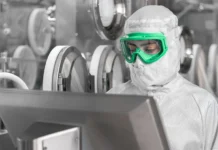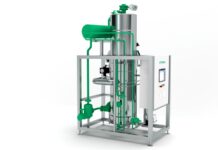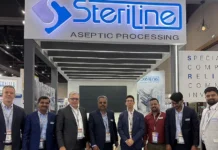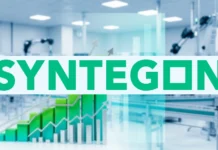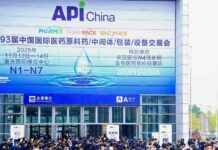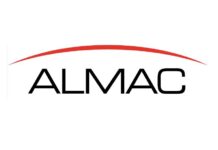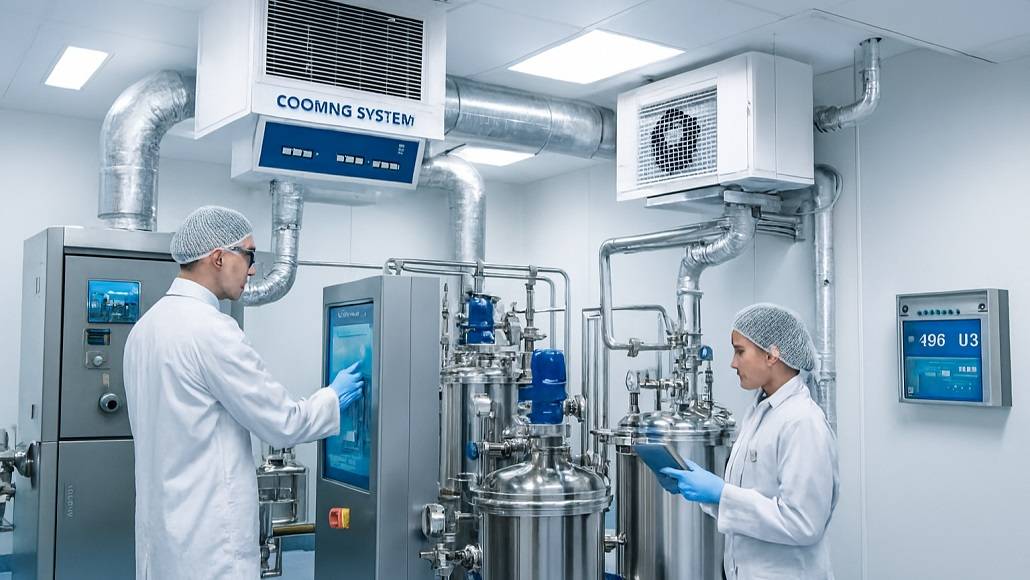Introduction
In pharmaceutical manufacturing, every degree matters. Process cooling is not merely a support function—it’s a critical control point that directly impacts product stability, batch consistency, and regulatory compliance. As the UK and European pharmaceutical industry continues to evolve with increasingly complex biologics, precision medicine, and stringent quality requirements, advanced pharmaceutical cooling systems have become essential infrastructure for maintaining competitive advantage and operational excellence.
The stakes are high: temperature excursions can compromise entire batches, whilst inadequate cooling capacity can halt production lines, resulting in significant financial losses and potential supply chain disruptions. For chief executives, operations directors, and quality control managers, investing in reliable, efficient cooling infrastructure is no longer optional—it’s a strategic imperative that directly impacts the bottom line and regulatory standing.
The Role of Cooling Systems in Pharmaceuticals
Temperature control serves as a cornerstone of pharmaceutical manufacturing quality assurance. From active pharmaceutical ingredient (API) synthesis to final product storage, precise thermal management ensures molecular stability, prevents degradation, and maintains the efficacy of sensitive compounds.
In biopharmaceutical production, temperature variations of just a few degrees can denature proteins, affect cell culture viability, or alter the properties of monoclonal antibodies. Clean room environments require consistent temperature and humidity control to prevent contamination and maintain ISO classification standards. Research and development facilities depend on stable cooling to ensure reproducible results in clinical trial material manufacturing.
Key compliance frameworks that mandate reliable cooling infrastructure include:
- Good Manufacturing Practice (GMP) requirements for environmental control and monitoring
- MHRA regulations governing temperature-controlled manufacturing areas
- EU GMP Annex 1 standards for cleanroom environmental monitoring
- ICH Q7 guidelines for API manufacturing facility design
- ISPE Baseline Guides for pharmaceutical engineering standards
- EMA guidelines for temperature-critical processes
Regulatory inspectors from the MHRA and other competent authorities scrutinise cooling system validation, maintenance records, and temperature monitoring data. Non-compliance can result in warning letters, production holds, or facility shutdowns. Having validated, well-documented cooling systems is essential for audit readiness and maintaining manufacturing authorisations.
Types of Pharmaceutical Cooling Systems
Pharmaceutical facilities employ various chilling technologies depending on their specific process requirements, facility constraints, and sustainability goals:
Water-Cooled Chillers These systems use cooling towers or dry coolers to reject heat and are highly efficient for large-scale operations. They offer superior energy efficiency at higher ambient temperatures and typically have a smaller footprint than equivalent air-cooled units.
Advantages: Higher efficiency, quieter operation, better performance in warmer climates, longer equipment lifespan
Considerations: Require water treatment programmes, need cooling tower maintenance, increasingly relevant given UK water sustainability initiatives
Air Cooled Chillers These units use ambient air to reject heat and are simpler to install and maintain. They’re ideal for facilities with limited water resources or where cooling tower installation is impractical.
Advantages: Lower installation costs, no water consumption, reduced maintenance complexity, flexible placement options
Considerations: Lower efficiency at high ambient temperatures, higher noise levels, larger footprint requirements
Free Cooling Systems These innovative systems utilise cooler ambient conditions—particularly relevant in the UK climate—to provide chilling without mechanical refrigeration, significantly reducing energy consumption for much of the year.
Adiabatic Cooling Technology This approach enhances cooling efficiency through evaporative pre-cooling of air or condenser coils, improving performance during peak demand periods without the full water consumption of traditional cooling towers.
Pharmaceutical Evaporative Cooling Specialised systems designed to meet pharmaceutical hygiene standards whilst leveraging evaporative cooling principles for enhanced efficiency and reduced environmental impact.
Benefits of Advanced Pharmaceutical Cooling Systems
Modern pharmaceutical cooling solutions deliver measurable advantages that directly impact operational performance and financial results:
Energy Efficiency and Cost Savings Advanced systems incorporate variable speed drives, intelligent controls, and free cooling capabilities that can reduce energy consumption by 30-50% compared to older fixed-speed systems. For facilities with high cooling demands, this translates to substantial utility cost reductions and improved operational budgets. With UK energy prices remaining volatile, the financial case for efficient cooling infrastructure has never been stronger. Sophisticated load management algorithms optimise chiller sequencing to match actual demand, preventing energy waste from oversized or inefficiently operated equipment.
Consistency in Product Quality Precision temperature control with tight tolerances (±0.5°C or better) ensures that critical processes remain within validated parameters throughout production cycles. This consistency reduces batch failures, minimises product variability, and strengthens quality control metrics. Advanced systems provide stable performance regardless of seasonal ambient conditions or production load fluctuations, eliminating temperature-related deviations.
Operational Reliability Built-in redundancy, predictive maintenance capabilities, and robust component design minimise unplanned downtime. Modern systems feature N+1 or 2N configurations that maintain cooling capacity even during equipment maintenance or component failures. Remote monitoring and diagnostic tools enable proactive intervention before minor issues escalate into production disruptions—critical for maintaining supply chain commitments.
Sustainable Production Goals As pharmaceutical companies commit to net zero targets and environmental, social, and governance (ESG) initiatives, cooling systems play a significant role in reducing carbon footprints. Low-GWP refrigerants, energy-efficient designs, and water conservation technologies align with corporate sustainability strategies. Some advanced systems can achieve PUE (Power Usage Effectiveness) improvements that substantially reduce Scope 2 emissions from facility operations, supporting commitments under frameworks like the NHS Net Zero initiative and broader UK pharmaceutical sector sustainability targets.
Regulatory Compliance and Validation
For quality control managers, operations directors, and technical directors, cooling system validation is a critical component of overall facility qualification. A properly validated cooling system provides the documented evidence that temperature-critical processes remain within specified parameters.
Leveraging Advanced Systems for Compliance
Modern pharmaceutical cooling solutions come equipped with integrated data logging, alarm systems, and documentation packages that streamline validation activities. Features such as:
- Continuous temperature monitoring with secure data storage
- Automated alarm notification for deviation detection
- Detailed operational logs for regulatory review
- Calibration documentation and traceability
- Change control integration capabilities
These capabilities reduce the burden on quality teams whilst providing robust evidence of process control during MHRA inspections and audits by other competent authorities.
Impact on Audit Readiness
Validated cooling systems with comprehensive documentation demonstrate proactive quality management to regulatory authorities. When cooling system records show consistent performance, proper maintenance, and rapid response to any deviations, inspectors gain confidence in the facility’s overall quality culture. This can significantly expedite inspection processes and reduce the likelihood of observations or findings related to environmental control.
Facilities planning for regulatory inspections should ensure their cooling system documentation includes:
- Complete validation protocols and reports (IQ, OQ, PQ)
- Preventative maintenance schedules and completion records
- Temperature mapping studies for critical areas
- Calibration certificates for monitoring equipment
- Deviation investigations and CAPA documentation for any temperature excursions
- Evidence of qualification of suppliers and service providers
Innovations in Pharmaceutical Cooling
The pharmaceutical cooling landscape is rapidly evolving with technological advancements that enhance efficiency, reliability, and operational visibility:
Smart Controls and Adaptive Algorithms Next-generation cooling systems employ artificial intelligence and machine learning to optimise performance based on real-time conditions. These intelligent controls predict cooling demand based on production schedules, weather forecasts, and historical patterns, automatically adjusting system operation for optimal efficiency without compromising temperature stability.
IoT Integration and Connectivity Internet of Things (IoT) sensors throughout cooling systems and critical spaces provide comprehensive data on system performance, environmental conditions, and equipment health. This connectivity enables centralised monitoring across multiple facilities, benchmarking performance metrics, and identifying optimisation opportunities that may not be apparent from individual site data.
Remote Monitoring and Diagnostics Cloud-based platforms allow engineering teams to monitor cooling system performance from anywhere, receiving real-time alerts about potential issues. Remote diagnostics capabilities enable service providers to troubleshoot problems virtually, often resolving issues without site visits and dramatically reducing mean time to repair (MTTR)—particularly valuable given current pressures on skilled engineering resources.
Predictive Maintenance Technologies Advanced systems monitor equipment vibration, temperature, pressure, and other parameters to detect early signs of component wear or impending failures. Predictive maintenance algorithms provide advance warning of required service, allowing planned interventions during scheduled downtime rather than emergency repairs during production runs.
Energy Optimisation Platforms Sophisticated energy management systems analyse cooling system performance against utility rates, production schedules, and ambient conditions to minimise operating costs. Some platforms can automatically shift cooling loads to off-peak periods when electricity rates are lower, reducing energy expenses without affecting production requirements.
Selecting the Right Cooling System for Your Facility
Decision-makers including chief operating officers, plant managers, heads of manufacturing, and directors of R&D must consider multiple factors when evaluating cooling system investments:
Capacity and Scalability Accurately assess current cooling loads and anticipate future expansion plans. Systems should provide adequate capacity with appropriate redundancy whilst allowing for modular expansion as production volumes grow. Oversizing leads to inefficiency; undersizing risks production disruptions.
Regulatory and Validation Requirements Ensure potential systems can meet your facility’s specific GMP requirements and that suppliers provide comprehensive validation support. Systems designed specifically for pharmaceutical applications typically include documentation packages and design features that simplify validation processes and satisfy MHRA expectations.
Energy Efficiency and Operating Costs Evaluate total cost of ownership over the equipment lifecycle, not just initial purchase price. Energy-efficient systems with higher upfront costs often deliver substantial savings through reduced utility expenses. Consider seasonal performance, part-load efficiency, and opportunities for free cooling in the UK climate—where ambient conditions allow significant energy savings for much of the year.
Reliability and Redundancy Assess system configurations for fault tolerance. Critical processes may require N+1 or higher redundancy levels. Evaluate component quality, manufacturer reliability records, and availability of spare parts within the UK.
Service and Support Infrastructure Consider the supplier’s service capabilities, response times, and technical expertise in pharmaceutical applications. Proximity of service centres, availability of emergency support, and preventative maintenance programmes impact long-term reliability. UK-based service infrastructure ensures faster response times and better understanding of local regulatory requirements.
Environmental Impact Evaluate refrigerant types, water consumption, and energy sources. Systems using low-GWP refrigerants and incorporating water conservation technologies align with sustainability objectives whilst future-proofing against evolving environmental regulations, including the UK’s F-Gas regulations and net zero commitments.
Evaluation Checklist for Decision-Makers
When assessing suppliers and solutions:
- [ ] Demonstrated experience in UK pharmaceutical cooling applications
- [ ] Comprehensive validation support and documentation aligned with MHRA requirements
- [ ] Energy efficiency ratings and performance guarantees
- [ ] Redundancy options and fault-tolerance capabilities
- [ ] Compatible with existing facility infrastructure
- [ ] Scalability for anticipated production growth
- [ ] Service level agreements and response time commitments
- [ ] References from similar UK pharmaceutical facilities
- [ ] Training programmes for facility staff
- [ ] Compliance with current and anticipated refrigerant regulations (F-Gas)
- [ ] Remote monitoring and diagnostics capabilities
- [ ] Total cost of ownership analysis including UK energy tariffs
- [ ] Warranty coverage and extended service options
- [ ] UK-based service and support infrastructure
Case Study: Enhanced Reliability in Biologics Manufacturing
A mid-sized UK biologics manufacturer producing monoclonal antibodies faced recurring temperature fluctuations in their cell culture suite due to ageing cooling equipment. These temperature excursions threatened batch quality and required extensive investigation and documentation for each occurrence, consuming significant quality resources and creating audit concerns.
After implementing an advanced pharmaceutical cooling system with built-in redundancy and precision controls, the facility achieved:
- Elimination of temperature excursions in critical production areas over 18 months of operation
- 35% reduction in cooling-related energy costs through intelligent load management and free cooling utilisation—particularly valuable during UK’s cooler months
- Zero unplanned downtime due to cooling system failures during the first year of operation
- Streamlined MHRA inspection with comprehensive automated documentation and trending data
- Improved production scheduling flexibility due to reliable temperature control regardless of seasonal variations
The quality control manager noted that the investment not only solved immediate compliance concerns but provided the operational stability needed to pursue facility expansion and new product introductions with confidence. The operations director highlighted that the energy savings substantially exceeded initial projections, delivering payback well ahead of schedule.
Why Partner with a Specialist in Pharmaceutical Cooling Systems
The complexity of pharmaceutical environments demands more than standard HVAC expertise. Specialised pharmaceutical cooling providers bring critical advantages:
Deep Industry Knowledge Suppliers with pharmaceutical sector experience understand GMP requirements, validation protocols, and the unique challenges of cleanroom environments. They design systems that meet regulatory expectations from the outset rather than requiring costly modifications after installation—crucial for maintaining MHRA compliance and securing manufacturing authorisations.
Comprehensive Support Throughout the Lifecycle From initial consultancy and load assessment through detailed design, installation, validation support, and ongoing preventative maintenance, experienced suppliers provide continuity and expertise at every project phase. This integrated approach ensures systems perform optimally throughout their operational life whilst maintaining validated status.
Proven Technologies for Critical Applications Pharmaceutical-focused suppliers offer technologies specifically engineered for environments where reliability and hygiene are paramount. These systems incorporate features like hygienic materials, easy-to-clean designs, and built-in redundancy that standard industrial cooling equipment may lack.
Long-Term Partnership Value As pharmaceutical manufacturing evolves with new therapies, processes, and regulations, having a trusted cooling partner who understands your facility and can provide expert guidance for upgrades and expansions delivers ongoing value beyond the initial installation. This relationship becomes increasingly valuable as facilities navigate evolving regulatory landscapes and sustainability requirements.
Conclusion
Advanced pharmaceutical cooling systems represent far more than facility infrastructure—they’re strategic assets that directly impact product quality, regulatory compliance, operational efficiency, and competitive positioning. As pharmaceutical manufacturing becomes increasingly sophisticated with biologics, cell and gene therapies, and personalised medicine, the role of precision temperature control will only grow in importance.
For pharmaceutical leaders evaluating cooling infrastructure, the question isn’t whether to invest in advanced systems, but how quickly they can implement solutions that will deliver reliability, efficiency, and compliance advantages. The right cooling system provides the stable foundation upon which pharmaceutical excellence is built, whilst supporting broader organisational objectives around sustainability, cost management, and regulatory performance.
Is your facility’s cooling infrastructure ready for the next generation of pharmaceutical manufacturing? Whether you’re planning a new facility, expanding existing capacity, or replacing ageing equipment, now is the time to partner with specialists who understand the unique demands of pharmaceutical production and can deliver solutions that exceed today’s requirements whilst preparing for tomorrow’s challenges.







